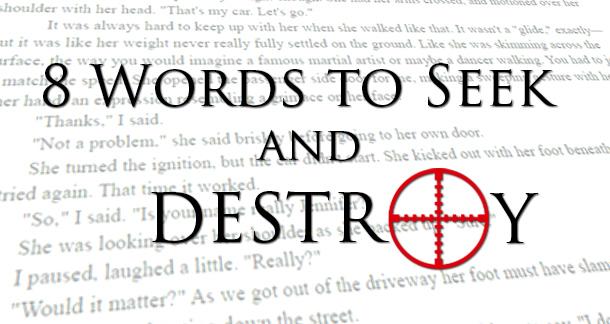How to write a story with tension:
8 Steps to do to create tension:
http://www.nownovel.com/blog/create-tension-writing/
The first type of tension: The tension of relationships:
http://www.thewritersalleyblog.com/2012/05/four-types-of-dramatic-tension-part-one.html
The 3 other types of tension: The tension of the task, The tension of surprise, The tension of mystery:
http://www.thewritersalleyblog.com/2012/05/four-types-of-dramatic-tension-part-two.html
Examples of writing by competition winners in NZ:
https://nzate.co.nz/writing-competition/
Writing is a process. It involves ideas + decisions about how to depict those ideas.
MAPST: What is your idea or message? Who are you appealing to? Why do you want them to care? How will you communicate your idea, to your audience in a way that makes an impact?
|
MAPST for WRITING |
||
| M – Meaning/Message | WHAT? | What is your idea? |
| A – Audience | WHO? | Who do you want this to appeal to? Who will care? |
| P – Purpose | WHY? | Why do you want them to care? What do you want them to understand? |
| S – Setting/Structure/Style | WHERE/WHEN/WHICH? | Where is your story set? When? Which structure will best reach your MAP? Which style will best support your MAP? |
| T – Techniques | HOW? | How can you use language techniques to fulfill your MAPS? |
Getting something down onto paper is important.
Using language features helps add power and punch to your message.
Crafting involves critiquing your work, seeking and receiving feedback, being willing to prune unnecessary fluff, strengthening weak areas and making sure it works structurally while also checking for diction and tone.
Take a look at the errors below that your English teacher will be detecting. See if you can find them first and fix them before you hand in your draft!
English Marking Code
| C | Capital letter needed or incorrect | Use capitals for the beginning of sentences, I and the names of specific people, places or things. E.g. I like rugby. Sue likes the All Blacks. |
| sp | Spelling error | Check and correct spelling. |
| P | Punctation missing or incorrectly used | Commas are often misused. See the video below about the wonderful world of correct comma usage. |
| s/pl | singular/plural | Check to make sure the plural or singular parts of the sentence agree. E.g. The girl were happy => The girls were happy. |
| S | Sentence error | Complete sentences include a verb and a subject. The most common sentence error is the run on sentence. |
| // | New paragraph needed | TIP TOP! Start a new paragraph when starting a new time, idea, place, topic or person. This is most often ignored when writing dialogue! A new person speaking requires a new line! |
| T | Tense inconsistency | In English, tense (the time something happens, has happened or will happen) is expressed in the verb. The verb is usually consistently in the past or present tense. Check your verbs. Remember that ‘is’ is a verb. |
| i | Language is too informal | Formal language requires you to avoid contractions (e.g. I’m, didn’t, etc), slang and overly relaxed conversational extras. |
| ? | What does this mean? | Read aloud or get a friend to tell you what they think you are trying to say. |
| ^ | Missing word | Read your work out loud to find the missing word that will aid fluency. |
| ww | Wrong word | Check the definition or try a synonym. Avoid complicated words you do no understand. Simple and clear is most effective. |
| wo | Word order | Syntax error. |
| Extra codes you may find useful: | ||
| RS | Run on sentence (comma splice). | Two independent ideas cannot be joined by a comma. If you want the ideas together, join them with a conjunction. E.g. FANBOYS – for, and, nor, but, or, yet and so. If you want the ideas close but distinct, break them up with a full stop. |
| uw | Unnecessary word | Read aloud to detect the extra word that is out of place or affecting fluency. |
10 words you really just feel like you kind of want to avoid a lot as you write:
https://www.freelancewriting.com/copywriting/ten-words-to-avoid-when-writing/
Writing is a combination of art and craft. The art comes from lots of reading, talking, thinking, dreaming, and writing. The craft is primarily technique. Some techniques are complex, but a few are very simple and will instantly strengthen your writing. In many cases, however, strengthening writing simply means avoiding those things that weaken it.
We have identified 10 words that nearly always weaken writing. In no particular order, they are as follows.
1. Really
“Avoiding this word is a really great idea.” Reason: A really great idea is the same as a great idea. If you need to emphasize something, such as the “greatness” of an idea, use a single word that means what you are trying to say, e.g., “Avoiding this word is an excellent idea.”
2. You
“Sometimes, you feel like writing is too hard.” Reason: I never feel this way, so this statement is not true. The writer probably means “I” or “some writers,” e.g., “Sometimes, I feel like writing is too hard.” “You” should only be used when you are actually writing to, and about, the reader, not when making general statements.
3. Feel
“I feel the government should stop people from writing poorly.” Reason: Which emotion is being “felt”? What is the writer touching and, therefore, feeling?
Usually, the writer means “believe” or “think.” “Feel” is also used by authors to describe a character’s emotions, as in “He felt despondent.” Instead, the writer should show the emotions through the character’s words and actions.
4. Think
“I think the government should stop people from writing poorly.” Reason: If you write an opinion, the reader understands that you also think it. Just say what it is you think, e.g., “The government should stop people from writing poorly.”
5. As
“As you write this word, poke out your eyes. It’s weak as it can cause confusion.” Reason: A person usually cannot do two actions simultaneously, so “as” doesn’t make sense in the first sentence. It could be rewritten, “Write this word, then poke out your eyes.” In the second sentence, the writer should use “because.” Until reading the rest of the sentence, the reader doesn’t know if “as” means two actions are occurring simultaneously or means “because.”
6. A lot
“A lot of writing could be made better.” Reason: How much is “a lot”? 100 documents? 50% of everything I have written? 1% of one million books? The term “a lot” is meaningless without the context, but if you give the context, you don’t need the term “a lot.” Also, this is highly subjective. “A lot” to one person may seem like some” to another.
7. Sort of/Kind of
“Using these words is sort of annoying to the reader.” Reason: If using these words is only sort of annoying, you haven’t told the reader exactly what it is. If it is annoying, say so: “Writing this way annoys the reader.” If it is not annoying, tell the reader exactly what it is, e.g., “Using these words bothers readers.” Use words that mean what you are trying to say, and give the reader exact descriptions. This also applies to “kind of.”
8. Like
“Using these words is like baking with spoiled milk.” Reason: If this is like something, then it is NOT that thing. Giving accurate descriptions and using correct verbs
will reduce your need to use “like,” e.g., “These words spoil your writing.” A good metaphor can enhance your writing, but using too many makes writing tedious, so try to think of a different way to express your ideas.
9. Just
“Some people are just persnickety about writing. It’s just the way they write.” Reason: The word “just” doesn’t add any real value to these sentences. Leaving
them out results in the same meanings and makes the sentences much tighter and more direct: “Some people are persnickety about writing. It’s the way they write.” Doesn’t that just sound better?
10. Used to
“He used to write like this when he started writing.” Reason: Using fewer words to express an idea is almost always a good idea, so “used to write” can be written “wrote,” as in, “He wrote like this when he started writing.” The problem is that “used to write” and “when he started writing” both express events in the past, which is redundant. In nearly every case, “used to . . .” can be replaced with a past tense verb.
The sample sentences demonstrate poor uses of these words, but you will find good uses, too. In fact, some of them are perfectly fine in some contexts or when used in
particular ways. Your level of formality, purpose, voice, and audience will determine whether or not to use these words. If you’re not sure whether or not to use them in a particular sentence, our advice is to avoid them.
Precise Edit editors keep a sharp eye out for these troublesome and confusing words. We evaluate their use and, in most cases, find a way to revise the sentences so as
to avoid them. The result is stronger writing that more clearly and more professionally communicates the author’s ideas.
About the Author:
David Bowman is the Owner and Chief Editor of Precise Edit, a comprehensive editing, proofreading, and document analysis service for authors, students, and
businesses. Precise Edit also offers a variety of other services, such as translation, transcription, and website development.
8 Words to Seek and Destroy in Your Writing

Creating powerful prose requires killing off the words, phrases, and sentences that gum up your text. While a critical eye and good judgment are key in this process, some terms almost always get in the way. Here are eight words or phrases that should be hunted down in your story and deleted with extreme prejudice.
“Suddenly”
“Sudden” means quickly and without warning, but using the word “suddenly” both slows down the action and warns your reader. Do you know what’s more effective for creating the sense of the sudden? Just saying what happens.
I pay attention to every motion, every movement, my eyes locked on them.
Suddenly, The gun goes off.
When using “suddenly,” you communicate through the narrator that the action seemed sudden. By jumping directly into the action, you allow the reader to experience that suddenness first hand. “Suddenly” also suffers from being nondescript, failing to communicate the nature of the action itself; providing no sensory experience or concrete fact to hold on to. Just … suddenly.
Feel free to employ “suddenly” in situations where the suddenness is not apparent in the action itself. For example, in “Suddenly, I don’t hate you anymore,” the “suddenly” substantially changes the way we think about the shift in emotional calibration.
“Then”
“Then” points vaguely to the existing timeline and says, “It was after that last thing I talked about.” But the new action taking place in a subsequent sentence or sentence part implies that much already. You can almost always eliminate your thens without disrupting meaning or flow.
I woke up. Then I, brushed my teeth. Then I, combed my hair. Then I , and went to work.
“Then” should be used as a clarifying agent, to communicate that two seemingly concurrent actions are happening in sequence. For example, “I drove to the supermarket. Then I realized I didn’t need to buy anything.” Without the “then,” it would be easy to mistake this as pre-existing knowledge or as a realization that happened during the drive itself. “Then” can occasionally be useful for sentence flow, but keep the use of the word to a minimum.
“In order to”
You almost never need the phrase “in order to” to express a point. The only situation where it’s appropriate to use this phrase is when using “to” alone would create ambiguity or confusion.
I’m giving you the antidote in order to save you.
And after ten minutes of brainstorming for an example of a proper time to use “in order to,” I haven’t been able to come up with anything. Legitimate uses of “in order to” are just that few and far between.
“Very” and “Really”
Words are self-contained descriptors, and saying, “Think of tasty. Now think of more tasty” doesn’t help readers develop a better sense of the meal or person you’re describing.
Her breath was very cold chill as ice against my neck .
Mark Twain suggested that writers could “substitute ‘damn’ every time you’re inclined to write ‘very'; your editor will delete it and the writing will be just as it should be.” Another strategy is to find a more powerful version of the same idea or give concrete details. To say “It was very/really/damn hot” does little, but saying “It was scorching” helps. Even better?: “The air rippled like desert sky as my body crisped into a reddened, dried-out husk.”
“Is”
Is, am, are, was, or were—whatever form your “is” takes, it’s likely useless. When’s the last time you and your friends just “was’d” for a while? Have you ever said, “Hey, guys, I can’t—I’m busy am-ing”?
The “is” verbs are connecting terms that stand between your readers and the actual description. This is especially true when it comes to the “is” + “ing” verb pair. Any time you use “is,” you’re telling the reader that the subject is in a state of being. Using an “ing” verb tells the audience the verb is in process. By using “is verbing,” you’re telling your audience that the subject is in the state of being of being in the process of doing something.
Take this example:
I was sprinting sprinted toward the doorway.
If the description is actually about a state of being—”they are angry,” “are evil,” or “are dead”—then is it up. But don’t gunk up your verbs with unnecessary is, am, or was-ing.
“Started”
Any action a person takes is started, continued, and finished. All three of these can be expressed by the root form of the verb. For example, “I jumped.” The reader who stops in frustration, saying, “But when did the jump start? When did it finish?” has problems well beyond the scope of the content they’re reading.
If you’ve been doing yoga for six years, you could reasonably say, “I started doing yoga six years ago.” For you, yoga is an ongoing action with a concrete starting point. But when describing action in a story, there are few circumstances where “start” is effective.
Let’s take this case and look at the potential fixes:
He started screaming.
Is it a single scream? Use “He screamed.” Are you telling us his screams will be background noise for a while? Rather than clueing us in unnecessarily, show us the series of screams first-hand. Do you want to introduce a changed state, such as escalating from loud speaking into screaming? Show us the decibels, the gruffness of voice, the way the air feels to the person he’s screaming at, and the hot dryness in the screamer’s throat as his volume crescendos.
“That”
“That” is a useful word for adding clarity, but like Bibles on the bedstands of seedy motel rooms, the word’s presence is often out of place.
When “that” is employed to add a description, you can almost always move the description to before the term and make a more powerful image.
Ireland was nothing but flowing green hills that flowed green.
In many other cases, “that” can simply be dropped or replaced with a more descriptive term.
I was drunk the night that your father and I met.
Many other uses of “that,” such as “I wish I wasn’t that ugly”, can be enhanced with more descriptive language.
“Like”
I’m not just saying that, like, you shouldn’t, like, talk like a valley girl (though that too). Here’s the problem: “Like” is used to show uncertainty. And you. Should. Not. Be. Uncertain.
Be bold. When making a comparison, use force. Use metaphor over simile. Don’t let yourself cop out by coming up with a halfway description.
My eyes rested on the gun for a sliver of a moment. I snapped forward, grabbed it, and it was like the chill metal flowed from the gun into my veins.
One of the 36 articles by the infamously fantastic Chuck Palahniuk dives into the issue of like in great detail. It’s well worth checking out.
As always, Orwell’s final rule applies: “Break any of these rules before saying anything barbarous.” There are instances where each of these words fills a valuable role. However, especially among inexperienced writers, these words are frequently molested and almost always gum up the works.
Apply these lessons immediately and consistently to empower your words. Then, with practice, you will suddenly realize that you are starting to naturally trim the text in order to create prose that is very powerful.



